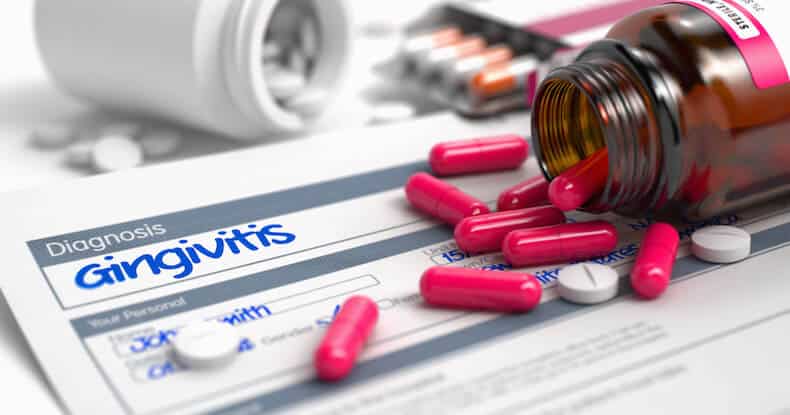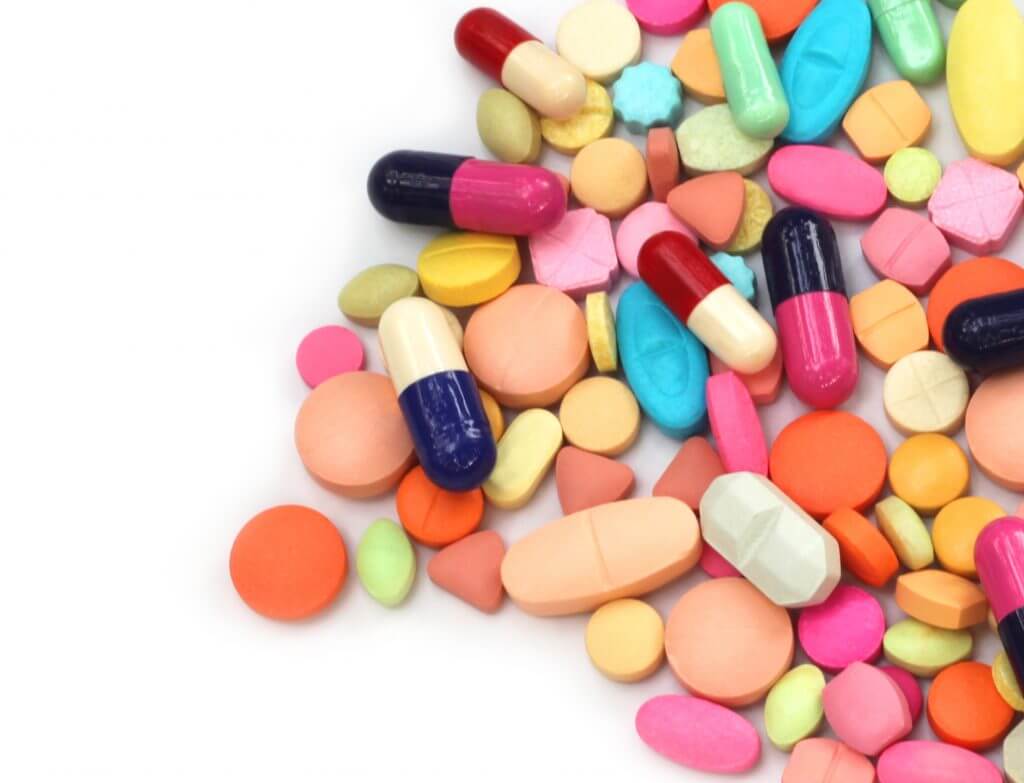Are antibiotics for tooth infection always needed? Not necessarily. There are multiple ways to treat oral health problems without antibiotics, including root canals and fillings or tooth extraction.
Antibiotics can, in some cases, save lives. The key is to only take them when prescribed and always follow your healthcare provider’s exact instructions.
Keep reading to find out more about:
- Who can and can’t take certain antibiotics
- Usual antibiotic dosages
- When you need antibiotics (and when you don’t)
- How to avoid antibiotic resistance
Common dental antibiotics
There are a number of antibiotics for tooth infection in the UK, and the type you need will depend on the bacteria that is causing your infection. The most common antibiotics used by dentists for dental infections are from the Penicillin family, including penicillin and amoxicillin.

Other dental antibiotics include metronidazole, clindamycin, azithromycin, and erythromycin. These are not as common as penicillin or amoxicillin in dentistry for fighting bacterial infections. However, they may be used if the patient is allergic to antibiotics from the penicillin class.
What antibiotics are used for tooth infection?
Common tooth infection antibiotics include penicillin, amoxicillin, metronidazole, clindamycin, and azithromycin. Let’s take a closer look at each of these drug options.
Penicillin and amoxicillin
Penicillin refers to a class of antibiotics that includes penicillin and amoxicillin.
According to the NHS, a typical amoxicillin dose for tooth infection is 250–500 mg every eight hours, or 3 times a day. This dose is for adults, and children may receive a slightly lower dose. The amount and frequency will depend on the type of infection you have and its location.
The typical dosage of Penicillin V (phenoxymethylpenicillin) for adults and children over 12 years old is 500mg, 4 times a day to treat infection, and twice a day to prevent infection.

Although antibiotics from the penicillin class are the most widely used antibiotics for tooth infection, some people may have allergies. In this case, your dentist will need to prescribe another type of antibiotic. Another problem with antibiotics is that they may not always be effective due to overuse, causing bacteria to become resistant.
In some cases, to aid the effectiveness of amoxicillin and prevent resistance, doctors will also prescribe clavulanic acid. The clavulanic acid helps to inactivate certain enzymes produced by bacteria and prevent them from destroying the amoxicillin.
Metronidazole
Using metronidazole for tooth infection is not usually the first choice, but it’s often prescribed as an alternative to people who are allergic to penicillin. It’s an antibiotic that doctors use to treat multiple types of infections, but it isn’t suitable for all patients.
Clindamycin
Clindamycin for tooth infection is another common alternative and it’s another antibiotic used in the treatment of multiple bacterial infections. It is growing in popularity for dental treatment because it’s more affordable, widely available and poses less risk of bacterial resistance.
Azithromycin
Azithromycin works by stopping the growth of bacteria and recurring infections. It is sometimes used as an alternative antibiotic if patients are allergic to penicillin.
Erythromycin
Erythromycin is used to treat dental abscesses and it’s safe for children to take. It’s not the most popular option, but for some patients, it may be the best antibiotic for infected tooth treatment.
What is the best antibiotic for tooth infection treatment?
In many cases, antibiotics from the penicillin class are the best antibiotics for a tooth infection. But that doesn’t mean these are the right choices for everyone! In fact, antibiotics may not be the best course of treatment, even if you have a tooth infection.
You should never take an antibiotic without a prescription from your dentist or doctor.
Many people take antibiotics without a prescription or proper knowledge of antibiotics. This leads to the overuse of antibiotics and is one of the causes of antibiotic resistance in bacteria. That means that some bacterial infections can no longer be treated with antibiotics… which is a scary thought!
Instead of antibiotics, your dentist may decide that the best course of action is to drain your abscess, perform a root canal, or possibly remove the infected tooth.
That being said, if your tooth infection is severe, and not getting better or spreading, you are likely to receive antibiotics. You may also receive antibiotics if you have a weakened immune system and are unlikely to beat the infection without antibiotics.
The best antibiotic for a tooth infection will depend on the type of bacteria that is causing your infection and the location of your infection. That’s because different classes of antibiotics work in different ways to fight bacteria.
This is one of the reasons why it’s essential to take the antibiotic exactly as prescribed by your dentist until you’ve finished your prescribed course of treatment. Your dentist or doctor will know which is the best drug to take for your infection based on your medical history and the type of infection.
How long does it take for antibiotics to reduce swelling from tooth infection?
You can start feeling the effects of antibiotics on a tooth infection in as little as a day. But just because your pain and swelling have gone away doesn’t mean your infection is entirely cured!
Your antibiotics won’t completely take care of the infection until you’ve taken them over a course of 7 to 10 days, and always for the complete amount of time your dentist has prescribed.
It’s extremely important that you take all of the antibiotics that your dentist has prescribed, exactly as prescribed. If not, you could just make bacteria resistant to the antibiotics and make your infection ultimately more difficult to treat.
How to get antibiotics for a tooth infection
You can get antibiotics for a tooth infection from your dentist or doctor, although dentists are preferable due to their experience with tooth infections. It is not possible to get antibiotics for tooth infection over the counter; you must have a doctor’s prescription.
If you have antibiotics left over from an old infection, you should not use them. To properly dispose of your antibiotics, take them to your nearest pharmacy.
What is the best antibiotic for gum infection?

A gum infection (periodontitis) left untreated can lead to all sorts of problems such as:
- Adult tooth loss
- Soft tissue damage
- Weakening of your jaw bone
Amoxicillin is the best antibiotic for a gum infection. However, if you have an allergy, other antibiotics for gum infection include erythromycin, tetracycline, or metronidazole.
What is the best antibiotic for a toothache?
A toothache caused by infection can be treated in various ways depending on the severity, location, and general health of the patient. In cases of severe infections that can’t be treated by root canal or tooth extraction alone, your dentist may prescribe an antibiotic—usually amoxicillin, or metronidazole in the case of a penicillin allergy.
Can you take doxycycline for a toothache?
Doxycycline is part of the tetracycline class of antibiotics. It isn’t typically a first-choice antibiotic; rather, it is reserved for more serious infections. Therefore, doxycycline should only be taken for a toothache if that toothache is caused by a severe infection and your dentist has prescribed it to you.
Doxycycline can also be used to help prevent the breakdown of gum tissue and help with the reduction of gum pockets in patients who have gum disease. At that dosage, however, it won’t treat bacterial infections.
Doxycycline for a tooth infection is not recommended in children under 12 because antibiotics from the tetracycline class can cause permanent tooth staining in children. It’s also not suitable for pregnant women.
Will I need antibiotics after oral surgery?
Most people don’t need antibiotics after oral surgery. There are some cases when your dentist may recommend them—for example, if you have some heart conditions or cirrhosis of the liver.
A dentist may also prescribe antibiotics for individuals with a history of infective endocarditis or a weakened immune system.
Antibiotic prophylaxis for dental work
Your dentist may prescribe preventative antibiotics for certain dental services or before the treatment of your dental infection; this is called antibiotic prophylaxis.
During certain dental treatments, the bacteria that reside in your mouth may enter the bloodstream, and prophylactic antibiotics can prevent infection.
Who needs antibiotics before dental work?

Most patients don’t require antibiotics before dental work, as our immune systems are more than capable. However, there are some people who may need antibiotics after oral surgery. This may include those who have had or have:
- Heart conditions, including congenital heart defects and disease
- An artificial heart valve
- A heart transplant
- Knee or hip replacement surgery
- Diabetes
- Cancer
- Infective endocarditis
Always make sure to share your full medical history with your doctor, or dentist before surgery or dental work. Even if you think it’s not relevant tell your dentist so they know if they need to prescribe antibiotics before or after dental work.
Antibiotics for children
Antibiotics are safe for children as long as you follow the dentist’s instructions and administer your child’s antibiotics exactly as prescribed. Never give a child antibiotics that weren’t prescribed directly for them. Dosage is dependant on many different factors so a child’s dosage will be very different from an adult’s dosage.
Let’s have a look at some of the general guidelines as stated by the NHS.
Facial swelling with infection
Antibiotics from the penicillin class are also the most popular choice for children with dental infections. Your dentist may decide that additional antibiotics such as metronidazole may be needed if the infection is caused by anaerobic bacteria—bacteria that don’t require oxygen and are most commonly found in the gastrointestinal tract.
Dental trauma and infection
If your older child’s teeth become dislodged due to trauma, the dentist may prescribe tetracycline. However, tetracycline can cause permanent tooth discolouring (also known as tetracycline teeth) when a child’s dentin is still being formed. So, children under 12 will be prescribed something else in most cases, like penicillin V or amoxicillin.
Periodontal disease
Children with aggressive periodontal disease may be prescribed antibiotics as a supplement to localised treatments. Topical antibiotics may also be used to help with gum healing.
Dental antibiotic dosage
It is important to take the correct dosage that your dentist or doctor prescribes at the indicated intervals. You can see some of the common antibiotic dosages for some different oral health conditions and infections in the tables below. However, these are only for reference and should not replace your doctor’s instructions.
Tooth infection antibiotics dosage
Drug name | Dosage for adults |
Amoxicillin | 500 mg every 8 hours or 1,000 mg every 12 hours |
Clindamycin | 300 mg or 600 mg every 8 hours |
Azithromycin | 500 mg every 24 hours for 3 consecutive days |
Metronidazole | 500–750 mg every 8 hours |
Tooth abscess antibiotics dosage
A dental abscess won’t go away on its own, so it’s crucial to seek professional help if you think you may have one. Your dentist may prescribe antibiotics for tooth abscess treatment if the infection has spread to nearby teeth, your jaw, or other areas.
Drug name | Dosage for adults |
Ampicillin-sulbactam | 3 g IV every 6 hours |
Amoxicillin-clavulanate | 875 mg orally every 12 hours |
Penicillin G | 2 to 4 g IV every 4 to 6 hours |
Cefoxitin | 1 to 2 g IV |
Clindamycin | 300 or 600 mg IV or orally every 6 to 8 hours |
Piperacillin-tazobactam | 4.5 g IV every 6 hours |
Dosage for gum infection
Drug name | Dosage for adults |
Metronidazole | 500–750 mg every 8 hours |
Amoxicillin | 500 mg every 8 hours or 1,000 mg every 12 hours |
Antibiotic resistance
Bacteria can develop resistance to antibiotics, resulting in ineffective treatment. This is a growing problem with the ongoing overprescribing and usage of antibiotics.
The most common antibiotics prescribed by dentists are amoxicillin, penicillin, and metronidazole, and these are the ones with the most potential for bacterial resistance. When bacteria become drug-resistant, infections are even harder to treat.
How to prevent antibiotic resistance
Some dentists (not all) frequently prescribe antibiotics to their patients, even for diseases that can’t be treated with antibiotics.
To stop the spread of drug-resistant bacterial strains, antibiotics should only be prescribed to control known local infections. Unfortunately, antibiotics are sometimes prescribed in situations where just inflammation is visible. Additionally, prophylactic use should be limited and only in cases when there are infections.
Patients also have a role to play to stop antibiotic resistance. A couple of things patients should do include:
- Ask questions: Ask your dentist or doctor about the antibiotics they are giving you and why you need them for your treatment.
- Don’t demand antibiotics: Never demand antibiotics from your doctor if they say they aren’t necessary.
- Don’t use old antibiotics: Don’t share or use old or leftover antibiotics; only take them when prescribed by your doctor.
The video below from UCLan and the British Endodontic Society talks all about the dental antibiotics for tooth infection and in dentistry.
Conclusion
Antibiotics have saved many lives over the years that could have been lost due to infection. Your dentist may prescribe antibiotics if you have a severe dental infection that can’t be treated through other methods like a root canal or extraction.
Antibiotics are safe for use in children as well, as long as the recommended dosage is followed. Although in children under 12, tetracyclines aren’t recommended, as they can cause permanent tooth discolouring.
To help prevent antibiotic resistance and ensure that antibiotics can continue to save lives for many generations to come, only use antibiotics prescribed by your dentist. And, make sure you finish the entire course of treatment, even if you feel better before your antibiotics run out.
FAQs
How much Clindamycin should I take for a tooth infection?
You should take the dosage prescribed by your dentist. A typical dose of Clindamycin for a tooth infection is 300mg, but if you have concerns, talk to your dentist.
How long does it take for amoxicillin to work for a tooth infection?
If you take the amoxicillin antibiotic for tooth infection, you may begin to feel better in just one to two days. However, that doesn’t mean that your infection is cured.
You must make sure to take your antibiotics for as many days as specified in your prescription, and even though you may feel better in a couple of days, your infection probably won’t be gone until a week to 10 days have passed.
What is the best antibiotic for abscess tooth treatment?
The best antibiotic for a dental abscess is the one your dentist prescribes for you. It’s also likely one from the penicillin class, including penicillin and amoxicillin. Patients who are allergic to penicillin may be prescribed metronidazole instead for tooth abscess antibiotic treatment.
International Dental Journal: Antibiotics in dental practice: How justified are we? Consulted 18th November 2020.
Aapd.org: Use of antibiotic therapy for pediatric dental patients. Consulted 18th November 2020.
Mpdi.com: Dental infection and resistance—global health consequences. Consulted 18th November 2020.
Nfid.org: How to prevent antibiotic resistance. Consulted 18th November 2020.
NHS. Amoxicillin. Consulted 5th July 2021.
NHS. Phenoxymethylpenicillin. Consulted 5th July 2021.
NHS. Medicines for babies and children. Consulted 25th September 2021.




